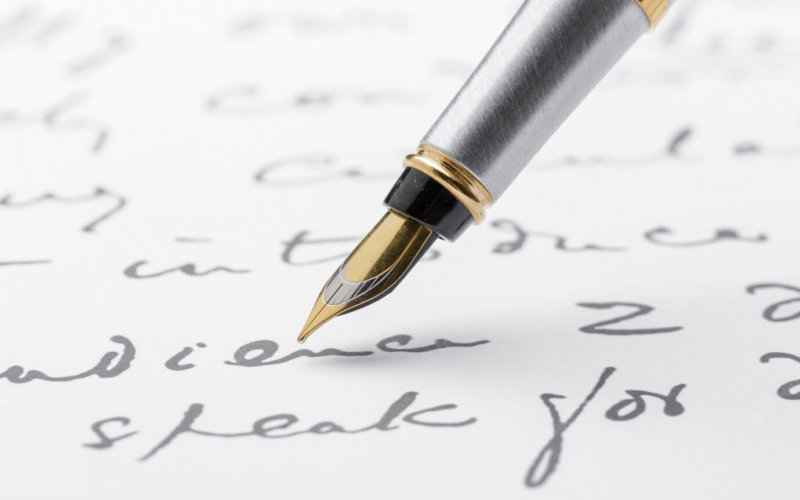There have been various materials used as writing instruments in the history of mankind. From reed to plastic, our ancestors have used numerous materials for pens or pencils. However, there is no such thing as a best material. Each and every material has its unique characteristics and these qualities of respective materials are important factors when they are used as materials for each part of a fountain pen. This article is going to describe important factors of nib materials, which is arguably the most important part of the fountain pen.
A nib to a fountain pen is a hand to a man. It is one of the most critical parts of a fountain pen. Nibs are the only part that directly touches the paper and are, therefore, the piece responsible for the general writing experience. When making a nib, the following qualities are considered important: ductility and reactivity. Ductility is the ability of a material to have its shape changed without losing strength or breaking and reactivity is the impulse for which a chemical substance undergoes a chemical reaction. Ductility is important because fountain pens have to go through pressure of writing on paper and recover its original shape after each stroke. Reactivity is also important because inks are based on water, which is reactive to most metals, and nobody would like to have a rusted nib tainted black or blue. Considering these two qualities, there are two materials that are mostly used to make fountain pen nibs: gold alloy and stainless steel.
Gold alloy such as 14k or 18k have certain percentages of its weight in gold in scale of the tetra vigesimal system, or base-24. 18k gold means it is an alloy that has 75.0% of its weight in gold, which is 18 divided by 24 in the percentage system. These gold alloy nibs have an advantage over stainless steel on reactivity since reactivity of gold is lower than that of any metal known to mankind other than platinum. Additionally, most gold alloy has good ductility which definitely works as an advantage compared to other metals. Also, gold alloy is generically used for jewellery, which applies an image of being luxurious to the gold alloy nib.
Stainless steel, however, has its own advantages: economical efficiency. It can mimic the characteristics of gold alloy nibs and still make it significantly more affordable than gold alloy. Because of this economic efficiency, most fountain pens targeting students or youngsters use stainless steel as their nib. However, since it is more susceptible to corrosion than gold due to the higher reactivity and people recognizing it as a “tacky” material, it is hard to find stainless steel nibs in luxurious branded pens targeting an elegant appeal to customers who seek for a pen of higher quality. Also, gold alloy nibs are treated better in the second-hand market since there are less chances of corrosion and they have a luxurious image. Due to this, it is recommended to buy a gold alloy nib rather than stainless steel nib when it is affordable for individuals who are buying it.
Reference:
Fountain Pen Design. (2016). 4.3 Material Technology. [online] Available at: https://fountainpendesign.wordpress.com/fountain-pen-nib-design-function/fountain-pen-nib-technology-stress-strain/ [Accessed 6 Jan. 2023].
Steinberg, J. (2002). Fountain Pens. Universe Pub.
Steinberg, J. (1998). Identifying fountain pens : the new compact study guide and identifier. Edison, N.J.: Chartwell Books.
